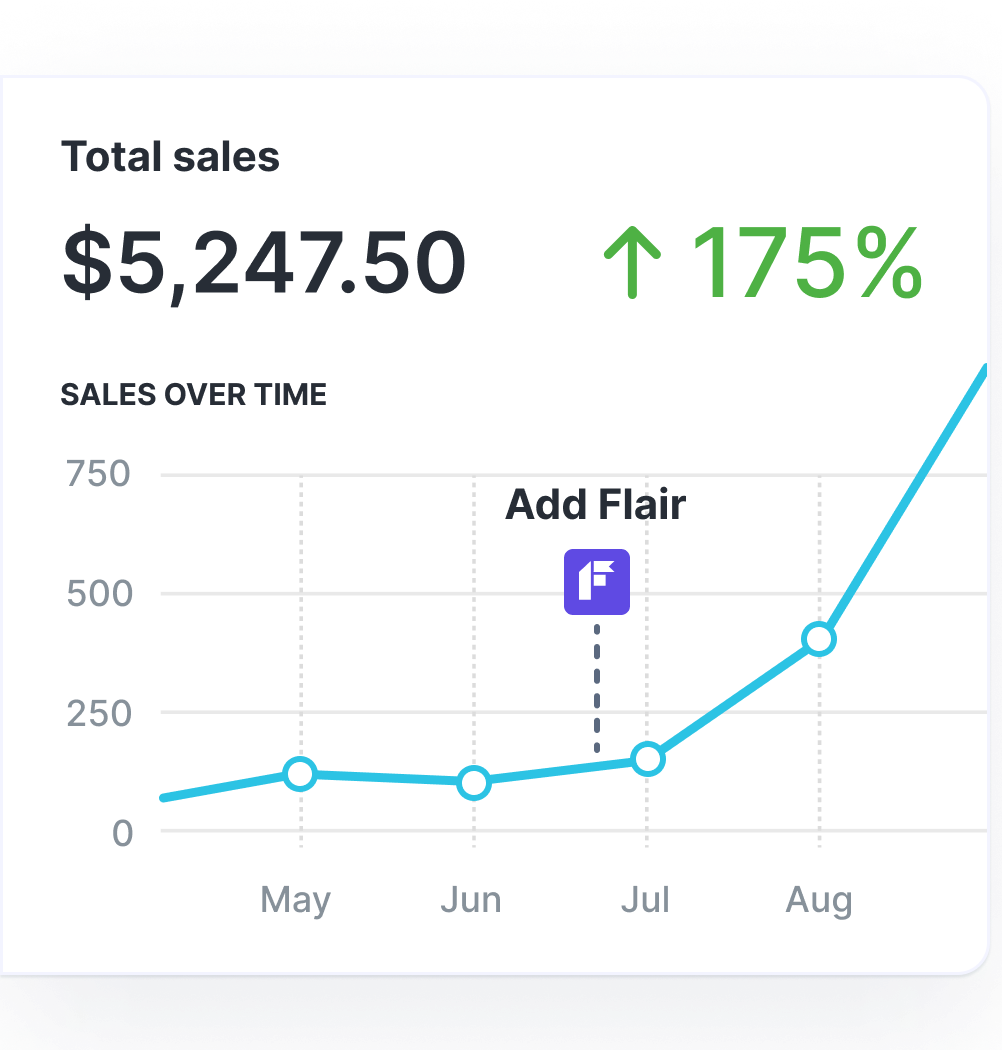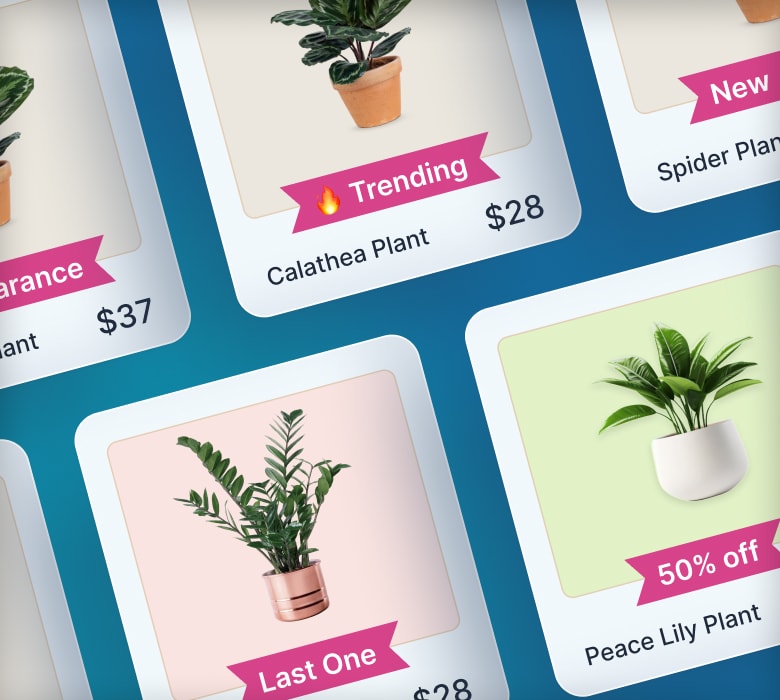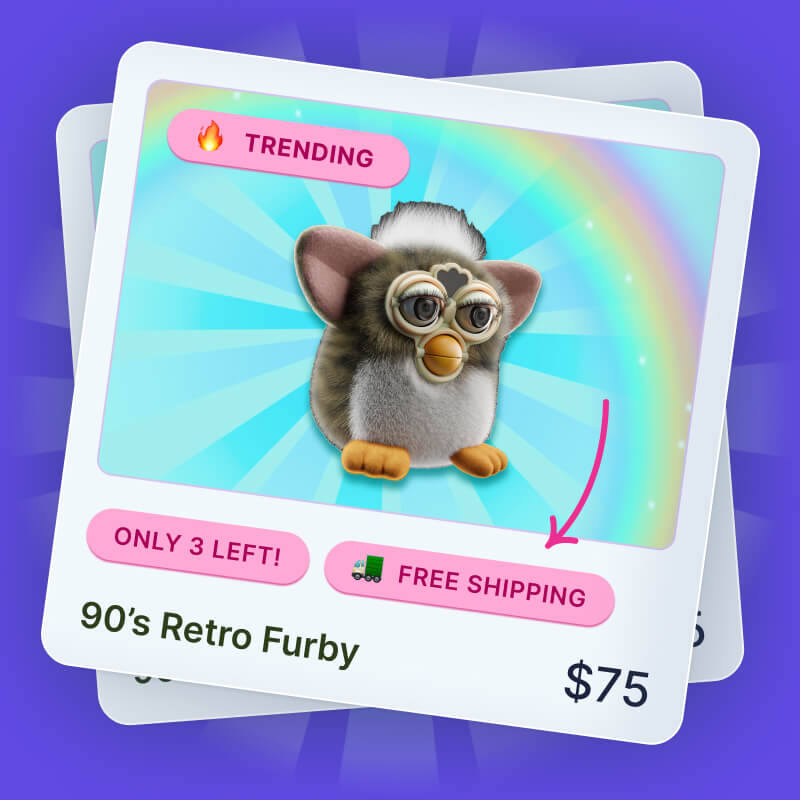How to Create Sales Urgency on Your E-Commerce Store

There are a whole lot of tire kickers out there in consumer land.
According to Kibo’s latest data, the average global e-commerce conversion rate stood at 2.6% in Q2 2022:

Meanwhile, IRP Commerce gave a figure of just 1.74% for January 2023.
Those depressingly low numbers suggest that you’re missing out on a whole heap of sales and revenue.
So you’re likely searching for strategies to boost your conversion rate — and one of the most effective approaches is to instill a sense of urgency. Something that makes customers think: “I’d better buy this thing right now.”
Wondering how to create urgency in the sales process (without being pushy)? You’ve come to the right place…
What is Urgency In Sales?
Urgency in sales is about giving your audience the feeling that they need to act immediately or risk missing out.
As such, urgency is closely associated with “FOMO;” the feeling that someone (or everyone) is enjoying something — an event, a product, a TV show — that you don’t know about.
A CBS News poll found that approximately one in three Americans feel like they’re missing out on something “frequently” or “occasionally.”
FOMO is particularly prominent among younger audiences, with almost two-fifths of 18 to 34-year-olds saying they “frequently” or “occasionally” feel they’re missing out.

Real vs. Implied Urgency
There are two broad “flavors” of urgency:
-
Real urgency. With real urgency, the customer knows they’re going to miss out if they don’t act fast. Perhaps there’s limited stock remaining or a looming deadline on a promotion.
-
Implied urgency. There’s no actual deadline or stock crisis here. Instead, implied urgency involves using actionable language to suggest a customer should buy now rather than later.
Unless you’re running perpetual flash sales or suffering constant stock shortages, you probably can’t rely 100% on using real urgency to close the deal.
Fortunately, if it’s not an option, implied urgency can still be an effective sales tactic.
What Are the Benefits of Creating Urgency in Sales?
The main reason to use urgency in sales is to increase sales.
But there are various other benefits — sub-benefits, if you will — to using urgency in sales and marketing messaging. Used wisely, urgency can:
- Make your products seem more desirable
- Boost the perceived value of your products and brand
- Encourage customers to make faster decisions
- Provide instant feedback on your sales process
- Dissuade customers from shopping around
7 Ways to Create a Sense of Urgency in Sales
Some salespeople (and brands) use urgency to rush customers into taking action before they’ve had time to weigh up the pros and cons. This pushy approach is rarely effective; you’re more likely to damage your reputation than close the deal.
However, urgency is also a totally legit way to drive sales. Here are seven tactics for using urgency that don’t come across as pushy or desperate:
1. Set Deadlines
If a customer knows there’s no hurry to make a purchase decision, they’re going to spend as long as they like shopping around and weighing up all the options.
That’s especially true if you sell high-ticket items.
And remember, buying your product might not be their top priority. They might start the research process, get distracted, bored, or frustrated, then return weeks or months down the line.
One way to guard against this is to impose deadlines, such as by adding a countdown timer to your e-commerce store:
Timers can have a significant impact on conversion rates, with one study finding that website popups containing countdown timers convert 113% better than non-timer popups.

There are various other ways for e-commerce sites to set deadlines (and remind customers a deadline is approaching). You can also try:
- Sending email reminders when the end of a sale is approaching
- Warning customers about the final shipping date ahead of a big holiday, like Christmas or Valentine’s Day
2. Imply Urgency With Your Words
Remember, not all urgency is real.
It’s totally fine to use messaging that implies a sense of urgency in order to speed up the decision-making process.
Examples of urgency-driving language include:
- Now.
- Hurry.
- One time only.
- Last chance.
- Before it’s gone.
- Clearance.
- Today only.
- Limited time.
- Instant.
- Don’t miss out.
- Almost gone.
- While supplies last.
- Flash sale.
3. Imply Urgency With Color
Words aren’t the only way to trigger a feeling of (implied) urgency.
Another approach is to use warm colors — think oranges, yellows, and reds — to drive action.
Research suggests this subtle tactic can yield serious results.
HubSpot A/B tested green and red CTA buttons on the homepage of Performable, a now-defunct automation tool:
The results were striking, with the red button driving 21% more clicks than its green rival.
Everything else on the page was identical, so the upturn in clicks was solely down to button color.
4. Leverage Upcoming Price Increases
When materials, shipping, energy, and other costs increase, you might “pass it on” to customers by hiking your own prices.
With a little smart messaging, you can use planned price increases as a tactic to drive urgency and sales.
This play is more often seen in the world of service sales.
For instance, when Amazon announced it was increasing the price of Prime, it gave customers a set time to lock in the lower price — thereby helping the e-commerce giant boost short-term sales.
5. Leverage Seasonality
Seasonality is another effective — and repeatable — way to create a feeling of urgency.
For instance, consider US search trends for the term “flight deals.”

All those (non-Covid-induced) spikes in activity occur in late November and early December, when Americans are arranging their holiday travel plans.
So if your e-commerce store sells flight-related products like…
- Luggage
- Neck pillows
- Eye masks
…you can use this seasonality to your advantage.
You know a lot of your audience will be flying in the near future, so you can urge them to buy before it’s too late.
6. Create Scarcity
Scarcity is a powerful motivator.
If a product is in short supply, it instantly appears more valuable. What’s more, we know that we’ll likely miss out if we don’t buy it soon.
Amazon uses scarcity to drive urgency (and sales) by clearly denoting when stocks are running low:

You’ll also notice this tactic on sites like Booking.com and Expedia, which love to tell you how many rooms are remaining at a given property.
For more on this, check out our guide to creating scarcity.
7. Keep the Pressure On
Building a sense of urgency isn’t about running a single “end-of-sale” email campaign or adding a couple red CTAs to your landing pages.
It’s about your entire sales funnel.
Dig into the data to identify the points where your funnel is leakiest.
For instance, if you’re seeing a high rate of cart abandonments, try adding a countdown timer to your checkout page to let customers know you’ll only keep their products on hold for a set period.
This tactic is popular with events websites like Ticketmaster…

…but there’s no reason you can’t use the same approach for your e-commerce shop.
Tips When Using Urgency In Sales
Urgency-based messaging can boost sales — but it can also put people off. Follow these tips and best practices to get it right:
Make Sure the Offer Is Relevant
Urgency only works if your messaging is relevant.
If 90% of your audience owns iPhones, you won’t get very far promoting Samsung Galaxy phone cases — even if you insist stocks are running low and your half-price sale is ending in one hour.
There are two basic options for improving relevancy:
- Create an offer that fits your audience. To continue our smartphone analogy, this could mean offering a time-limited discount on iPhone accessories.
- Target an audience that’s interested in your offer. This might involve targeting the 10% of your audience that uses Android devices. Or, even better, solely targeting Samsung Galaxy users.
Reduce Anxiety
In the world of e-commerce, we might feel anxious if a website doesn’t feel right.
It’s an entirely rational fear, with a study from Check Point Research revealing that one in 25 new e-commerce websites are malicious.
Unfortunately, feelings of anxiety are only going to increase if customers think you’re pressuring them into a purchase.
But you can mitigate this feeling by building trust in your store. This might include:
- Clearly explaining your returns policy and shipping times
- Adding trust factors, like customer reviews, testimonials, and trust badges
- Ensuring your site has an SSL certification installed
- Making your website simple to navigate
- Offering a variety of payment options
Reduce Distraction
We live in a distracting world.
Clearly, there’s nothing you can do if your customer receives an urgent phone call halfway through the checkout process.
But you can definitely take steps to reduce distractions on your website, helping to keep customers’ minds focused on the task at hand: buying something.
Try removing navigation menus and other links from your shopping cart and checkout pages. That way, there’s less chance the customer will go back for one more browse before paying.
Speaking more generally, you should also make the path to conversion as seamless as possible.
For instance, adding a smart search function to your site makes it easier for customers to find relevant products.
The faster customers find what they’re looking for, the less chance they’ll get distracted during the buying journey.
Final Thoughts
Urgency-related messaging should be used sparingly.
Sure, it can be extremely effective. But customers will start to dial out if every email, popup, or banner screams “LAST CHANCE, BUY NOW!”
Fortunately, there are lots of other tactics for persuading your audience to take action. Learn all about them by reading our ultimate guide to increasing Shopify conversion rates.

Grow Your Shopify Sales by over 175% with Flair
-
Increase sales using product badges and sales banners
-
Maximize conversions with scarcity, urgency and countdown timers
-
Automate promotions with targeted rules and scheduling








